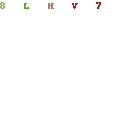Record keeping in Homeschooling
A topic that frequently comes up in meetings and forums that deal
with homeschooling is record keeping. The importance of record
keeping cannot be ignored. It is not only legally required in
various States, but also provides important milestones in your
child's learning experience. An interest-initiated homeschooling
approach means that the topic of studies is far ranging and
multifarious. Thus, it can be something of a challenge to write
quarterly reports for the school district, when it is difficult
to classify learning into neatly pigeonholed areas.
Record keeping is important not only for the sake of regulations.
It is also an exciting way to record and document the learning
process of the child. When most of the learning is done through
play and there is no clear cut index of topics that have to be
covered, it is necessary for the parent to keep some sort of a log
which records the child's progress.
The records you keep can be as simple as a daily journal, or as
elaborate as a software program. If you participate in a support
group, you probably have set forms and requirements. But even so,
keeping track of daily work makes reporting easy and efficient.
There are various record keeping methods used by various
homeschools. Some of the more popular ones are:
Journal:
This can be maintained by the teacher or the student. This
basically aims to keep a log of what was learned and what was
done. Recording memorable events that happened in the course of
the year is a great way to reminisce later on.
Daily planner:
Lay out the plans and the assignments for the week in a teacher's
planning notebook. Check each item as it is covered. Maintain a
separate area where any additional things can be recorded. This
includes educational trips, visits and videos etc. Any extra
topics that were covered are also recorded in this area. Make a
summary every quarter.
Portfolios:
This consists of a collection of varied materials that show what
the child has achieved and done during the course of study.
Portfolio assessment is a very effective way to chart the child's
progress. It gives structure to the otherwise loose and flexible
form of schooling called homeschooling. A drawing portfolio will
consist of some paintings or sketches that are considered the best
in that quarter. A language portfolio may consist of essays,
stories, reading-logs, spelling samples or letters. Progress in
mathematics, fine arts, history, science and social studies can
all be recorded this way. The biggest advantage is that portfolio
assessment places control in the hands of the children. Having a
tangible record of what they have established eggs them on to
greater heights.
Other than the above-mentioned systems, there are also purchased
record-keeping systems that lay out a good checklist. Some of
these allow one to personalize the organizer. Irrespective of the
methods used, record keeping in one form or the other is
essential. Your child's future may well depend on the
well-maintained record that you have meticulously kept over the
years.























